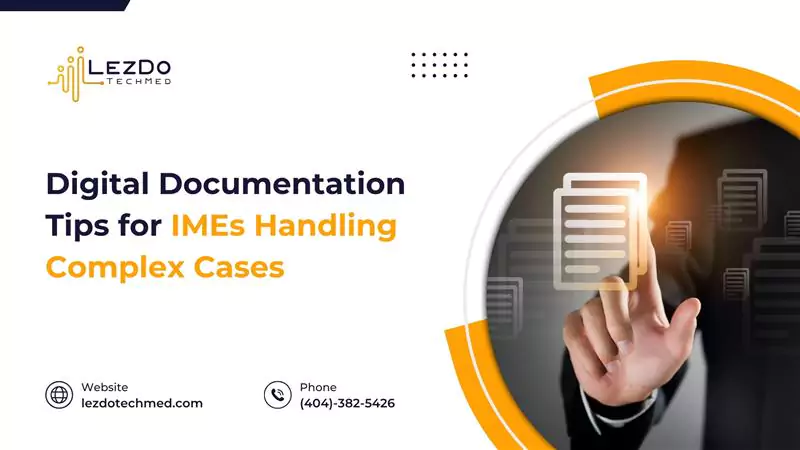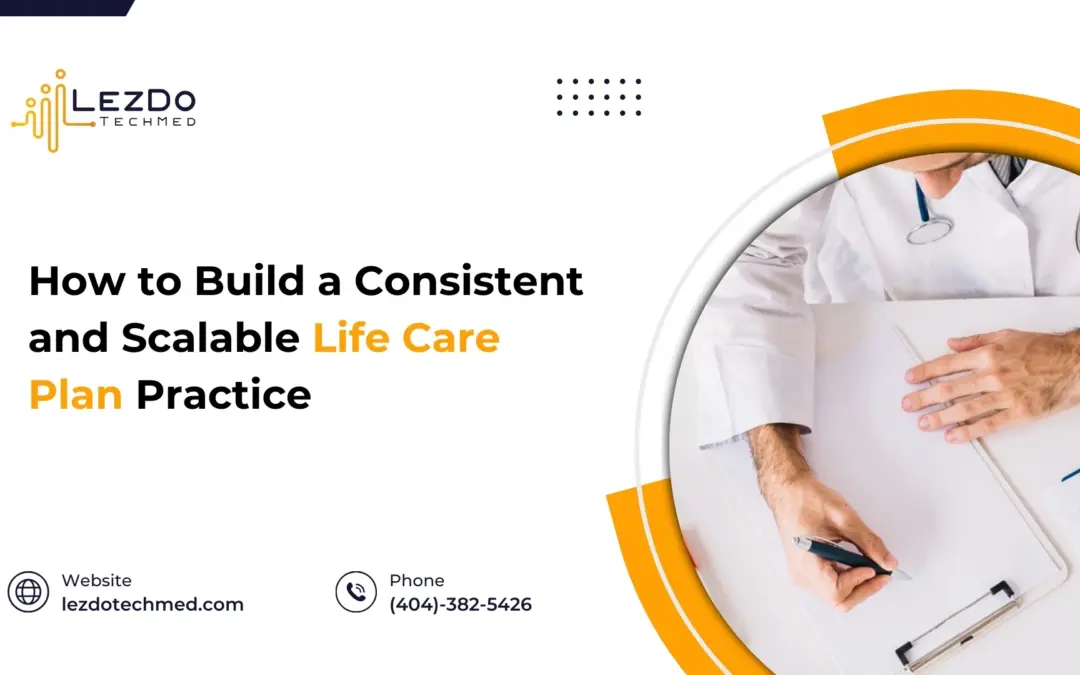You’ve worked hard to build a strong client base as an IME or QME. Well done. That’s not a small achievement in such a highly competitive field. But here’s something to consider: Are you making the most of those relationships?
Your current clients aren’t just part of your caseload; they’re also your most powerful source of high-quality referrals.
Attorneys, insurers, and case managers you’ve already worked with know your value. If they had a good experience with you, they’re likely to recommend you. However, don’t assume that they will always do it on their own.
So how do you turn a satisfied client into a repeat referral source? It is easier than you think. You need not spend anything on advertising to get those potential referrals.
Let’s go through some simple but practical ways to keep your name on top of their minds and turn those everyday interactions into long-term client relationships. See how to turn existing clients into referral sources here.
1. Deliver an exceptional experience
Do you think your job ends after delivering a well-prepared report? That’s important, but your job doesn’t end there if you want more potential referrals. You need to go further for that.
How to ensure an exceptional experience during an IME/QME?
- Clear communication: Always confirm your appointments, respond to them promptly, and keep all the relevant parties informed throughout the process.
- Timely delivery: Consistently meet and (if possible) exceed your report deadlines.
- Professional approach: Be it in your conversation tone or report format, maintain a high standard.
- Respect all: While speaking with a claimant, attorney, or case manager, treat them with courtesy and professionalism.
When clients feel like you’re pleasant to work with and reliable, they’ll naturally refer you.
2. Ask for referrals the right way
Never hesitate to ask for referrals. You don’t need to beg or sound awkward. Just keep it light and casual.
Here’s how to ask:
Wait for a moment of praise (e.g., after delivering a strong report or solving a problem).
Give a friendly reminder: “I’m glad that worked out. If you know anyone looking for reliable IME/QME evaluations, feel free to send them my way. I‘d really appreciate it.”
You can also add something like this to your email signature:
“Referrals always welcome—happy to help with your next evaluation.” or
“Know someone who needs timely, defensible IMEs/QMEs? I’m happy to help—referrals welcome.”
Referrals often come down to timing. A light, well-placed reminder can keep you top-of-mind when that time comes.
3. Make referring to you easy
People are busy. Even the client who loved your work won’t refer you if it’s a hassle.
Make it simple:
Provide a short summary of who you are, what you offer, and how to contact you. So that they can forward it to others.
Include a “Refer a Colleague” section on your website with a short form or clear contact info.
Offer a downloadable PDF listing your services, turnaround time, and specialties. Make it shareable.
The easier it is to refer you, the more likely it will happen.
4. Show appreciation without breaking compliance rules
IME/QME work is highly regulated. You can’t offer referral fees or gifts. But that doesn’t mean you shouldn’t say thank you.
Here are a few ways to do it:
Send a personal thank-you email.
Writing a quick handwritten thank-you note still works!
Mention them (with permission) on LinkedIn with a professional shoutout: “Grateful to work with professionals like [Name] who go the extra mile for their clients.”
People remember appreciation, and they feel good about referring you again.
Invite your best referral sources to share their experiences as testimonials (with their permission). People love to be recognized as experts.
Gratitude keeps the relationship warm and encourages future referrals.
5. Educate your clients on how to refer you
The more your clients understand what you do and how you can help, the more likely they are to refer the right cases to you.
Share simple tools like:
- A checklist: “How to Prepare for an IME/QME”
- A short email template they can forward to others.
- Quick LinkedIn posts that show your expertise.
Or consider this:
- Host a short webinar or virtual lunch-and-learn explaining the IME/QME process, common pitfalls, or updates in med-legal rules.
- Share quick, useful insights in a monthly email newsletter: “3 Tips for Better Case Prep,” “New QME Rules to Watch,” etc.
When clients understand what you do, they’re more confident recommending you.
6. Be consistent and visible
Out of sight means out of mind. You need to always stay on your clients’ radar without being annoying.
How to stay visible:
- Send brief follow-ups after completed evaluations: “Let me know if you need anything else on this case,” or “Let me know if I can support you on the next one.”
- Share helpful tips or updates on LinkedIn once or twice a month.
- Send holiday cards or year-end thank-yous.
These are reminders that you’re still around and still delivering value.
Your visibility keeps you in the mental “referral loop” when new cases pop up.
7. Show what makes you different
Your clients may be working with several evaluators. Why should they refer you?
This is your chance to clarify what makes you stand out. For example:
- Do you have a subspecialty that’s hard to find? Specify your specialty.
- Are your turnaround times faster than average? Emphasize that your reports are always on time.
- Do you include thoughtful visuals or summaries that make reports easier to use? Explain how your reports stand out in assisting your clients in their processes.
- Talk about what makes you different in your emails, websites, and conversations.
These will help others explain your value when you’re not in the room.
8. Follow up on referrals
When someone sends a new client your way, don’t just smile and move on. Follow up.
Say something like:
“Thank you again for referring [Client]. I’ve reached out and will keep you posted.”
“Appreciate the connection, your trust means a lot.”
Even if the referral doesn’t convert to a client, acknowledging the effort of the person who referred keeps the relationship strong and sets the stage for the next one.
9. Build referral partnerships
Sometimes the best referrals come from peers too. That includes:
- IMEs/QMEs with different specialties: Share cases that fall outside your scope. This will open a path for referrals on your way.
- Treating physicians who don’t perform evaluations: Build a relationship. When they get inquiries, they may remember you and refer you.
- Med-legal consultants, case managers, or billing experts: Connect with them to attract some referrals.
These kinds of referral loops work best when they are two-way: Offer referrals when it makes sense, and share their content to build goodwill.
Generous professionals are always remembered.
10. Track your referrals
Don’t leave your referrals to chance. Create a simple system to track:
- Who referred each case
- What the outcome was
- When you last followed up
You can track this using a basic spreadsheet or a simple CRM tool. It will help you spot your most valuable referral sources and ensure you thank them properly. It also shows which outreach efforts are paying off, so you know exactly where to focus your energy.
In a nutshell,
Follow a few simple habits, like asking for referrals, following up, and staying visible, and your business will grow without chasing leads or running ads.
Referrals come from relationships. Focus on building those, and the rest takes care of itself.
View Our Client Success Stories!









